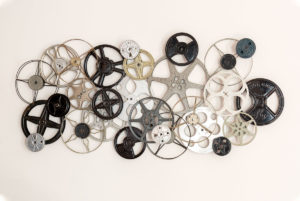Although often neglected or ignored, lighting plays a key role in the success of any room. A few simple, well-placed fixtures can transform a space from blah to amazing with the flip of a switch. It is no wonder that entire departments are dedicated to this on every stage performance and movie set. This is the kind of drama you do want in your life.
Basically speaking, we light rooms for different purposes. We must consider the function of the room, the mood we wish to convey, and the overall balance of the room and the lighting. That may seem like a tall order, but with a little practice, you will find this is easier than imagined. The function mostly pertains to how you will be using the space. You may need task lighting for reading, for example. Maybe you have a piano in the room and need a piano light over the sheet music. In the dining room, you will need an overhead light to see your food. Other functional considerations include general ambient lighting which makes it possible to see enough to get about the space.
Next, you get to start working the drama. This is where you use a variety of fixtures to add life to the room and tell your story. If you have paintings, objects of art, or special things you wish to highlight install the appropriate lights to do so. This could be a gallery light or table spot. These days there are many options available to consumers that used to be available exclusively to the trade. You can find many good solutions at your local home improvement store. You might also choose to highlight a few plants. This adds a great deal of drama to any room. One way to really make an impact is to shoot an uplight from the bottom of a plant. Not only does it highlight the plant, but it also casts interesting shadows on the wall and/or ceiling. These simple lights can be found for under 20 dollars. After you have decided on the lights, you will need to test for the overall balance of your room design and the lighting plan. You must make sure that you have a variety of light fixtures (lamps, overhead lights, uplights, sconces, etc), that they are at varying heights within the room, that they are of differing intensities, and that they send light in many directions. This will create some balance.
Here, then, are the steps simplified:
- step 1 – task lighting (add ambient light as necessary)
- step 2 – mood lighting (artwork, decorative objects, any excessively dark areas that remain)
- step 3 – test for balance (fixtures, heights, direction, and intensity)
Other things to consider:
- You are not really lighting a room. You are lighting objects in a room.
- Manage your cords. They can become unsightly.
- Getting your lights hard wired is great and in many cases necessary. I prefer ones that I can move around. I change things often.
- Nothing helps more with mood than dimmers. Who doesn’t like to have some control?
- It is a really good idea to place some of the mood lighting on timers.
- Consider your patio and front entry as rooms that need proper lighting.
- Take proper precautions and if you are at all uncomfortable with installing any lighting get help or hire a professional.
Finally, there is no way that we could cover every nuance of good lighting on one day within the format of this blog. Today we have tackled the basic rules. In future posts, we will break these topics out in more detail. If you have specific questions, please feel free to email me or post them within the comments.
savour… seeing the light







